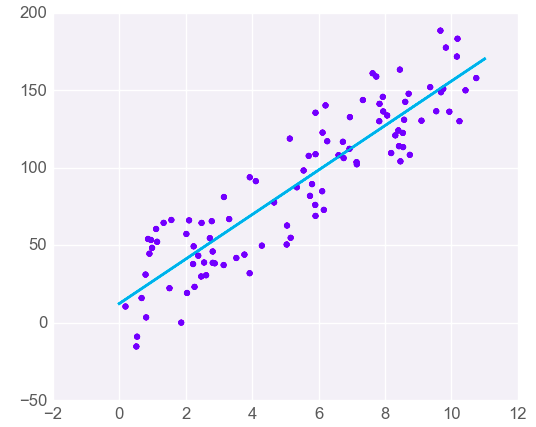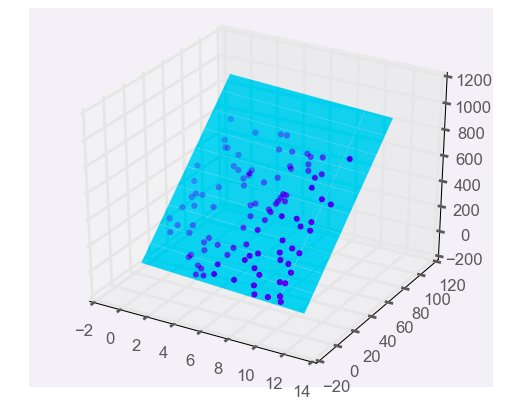03-线性回归进阶
更高维度的线性回归
二维空间的线性回归,到一条直线熵

三维空间的线性回归,到一个面上

更高维度的线性回归,我们无法绘制和理解出来,只能是通过数学的方式计算对应的数值
实战2个参数的线性回归
汽车的加速度,排气量和油耗之间有线性的关系,请采用梯度下降分析出来
1
2
3
4
5
6
7
8
9
10
11
12
13
14
15
16
17
18
19
20
21
22
23
24
25
26
27
28
29
30
31
32
33
34
35
36
37
38
39
40
41 | import numpy as np
data = np.loadtxt("cars.csv",delimiter=',' ,usecols=(3,6,1),skiprows=1)
feature = data[:,0:2]
ones = np.ones((len(feature),1))
Feature = np.hstack((feature ,ones))
Label = data[:,-1:]
weight = np.ones((3,1))
bhistory = []
mhistory = []
msehistory = []
learningrate = 10
##关键代码
changeweight = np.zeros((3,1))
def gradentdecent():
global changeweight
global weight,learningrate
mse = np.sum(np.power((np.dot(Feature,weight)-Label),2))
msehistory.append(mse)
if len(msehistory)>=2:
if(msehistory[-1]>msehistory[-2]):
learningrate = learningrate /2
else :
learningrate = learningrate * 1.1
change = np.dot(Feature.T,(np.dot(Feature,weight)-Label))
###关键代码
changeweight = changeweight + change**2
weight = weight - learningrate* change/np.sqrt(changeweight)
###关键代码
for i in range(100000):
gradentdecent()
mhistory.append(weight[0][0])
bhistory.append(weight[1][0])
print(weight)
|
使用框架sklearn 线性回归计算
| from sklearn.linear_model import LinearRegression
|
| model = LinearRegression()
|
| feature = np.array([80,95,104,112,125,135])
label = np.array([200,230,245,274,259,262])
|
| model.fit(feature.reshape(-1,1),label.reshape(-1,1))
|
| model.predict([[80]]) #预测
|

